Affiliate marketing is a performance-based marketing strategy where individuals or businesses earn a commission by promoting other people’s or companies’ products or services.
Choosing a Niche
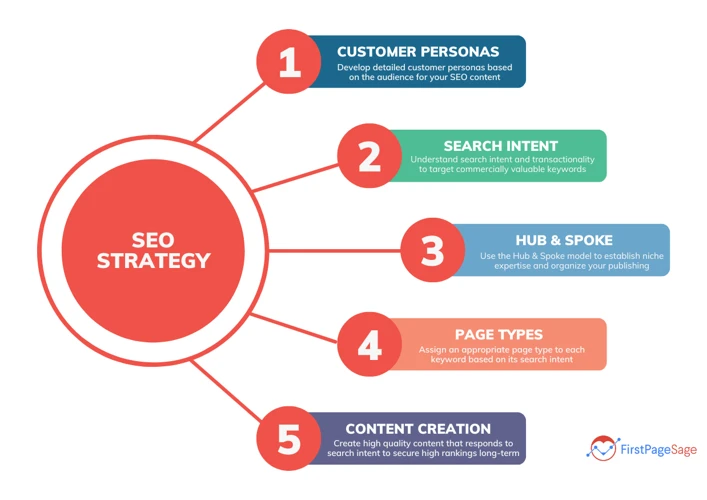
When it comes to starting an affiliate marketing blog, choosing the right niche is crucial for success. Researching profitable niches is the first step in narrowing down your options. Look for niches that have a high demand and low competition. Consider your interests, expertise, and target audience to find a niche that aligns with your passion and has the potential for profitability. Once you have a list of potential niches, evaluate the competition in each one. Analyze the top-ranking websites, their content, and their strategies to determine if you can effectively compete in that niche. Remember, finding a balance between profitability and competition is key to selecting a niche that will allow you to stand out and attract your target audience. So, take your time and carefully choose a niche that you are passionate about and has the potential for success.
Researching Profitable Niches
is a crucial step in the process of starting an affiliate marketing blog. It involves finding niches that have a high demand and the potential for profitability. To begin, consider your own interests, expertise, and passions. Think about the topics that you are knowledgeable about and enjoy writing about. This will not only make the process more enjoyable for you but also ensure that you can provide valuable and engaging content to your audience.
Next, use keyword research tools such as Google Keyword Planner, SEMrush, or Ahrefs to identify popular and trending topics within your chosen niche. Look for keywords with high search volumes and relatively low competition. This will indicate that there is a demand for content in that niche, but the market is not overly saturated with competition.
Additionally, consider the monetization potential of the niche. Research affiliate programs and networks that offer products or services related to your niche. Look at the commission rates, conversion rates, and the popularity of the products or services within the niche. This will give you an idea of the earning potential in that particular niche.
It’s also important to assess the long-term viability of the niche. Look for niches that have a stable and growing audience. Consider the market trends, demographic data, and any potential changes or advancements in the industry. You want to choose a niche that has the potential to be profitable not just in the present but also in the future.
By thoroughly researching profitable niches, you can set a solid foundation for your affiliate marketing blog and increase your chances of success. So, take the time to explore different niches, analyze their demand, competition, and monetization potential, and choose a niche that aligns with your interests and has the potential for long-term profitability.
Evaluating Competition
When evaluating the competition in your chosen niche for your affiliate marketing blog, there are several key factors to consider. Firstly, examine the top-ranking websites in your niche and analyze their content and strategies. Take note of the type of content they produce, such as blog posts, product reviews, or video tutorials, and assess the quality and depth of their content. Look for gaps or areas that you can improve upon to create more valuable and informative content for your audience. Additionally, pay attention to their SEO efforts. Look at the keywords they are targeting, the titles and meta descriptions they use, and their overall site structure. This will give you insights into how you can optimize your own blog for better search engine rankings. Analyze their social media presence. See how they engage with their audience, the platforms they are active on, and the type of content they share. This will help you understand how you can leverage social media marketing to reach and engage with your target audience. Lastly, examine their monetization strategies. Identify the affiliate programs they are promoting and evaluate the effectiveness of their promotional tactics. This will give you ideas on potential affiliate programs to join and ways to effectively promote products or services to your audience. By thoroughly evaluating the competition, you can gain valuable insights and develop strategies to differentiate yourself and stand out in your chosen niche. (source: how-to-do-affiliate-marketing-on-shopify)
Setting Up Your Blog

Setting up your blog is the next crucial step in starting your affiliate marketing journey. First, you’ll need to choose a domain and hosting provider that suits your needs. Consider a domain name that reflects your niche and is easy for readers to remember. Next, select a reliable hosting provider that offers good uptime and security features. Once you have your domain and hosting, you’ll need to install a content management system (CMS) like WordPress. WordPress is user-friendly and offers a wide range of plugins and themes to customize your blog. Customize your blog’s design and layout to align with your brand and niche. Remember, a visually appealing and user-friendly blog will attract and retain readers. So, take the time to set up your blog properly and ensure it reflects your brand and niche.
Choosing a Domain and Hosting Provider
When it comes to choosing a domain and hosting provider for your affiliate marketing blog, there are a few key factors to consider. First, you’ll want to select a domain name that is relevant to your niche and easy for readers to remember. It’s a good idea to choose a domain name that includes your main keyword, as this can help with search engine optimization. Additionally, consider the extension of your domain name (.com, .net, .org, etc.) and choose one that is widely recognized and trusted.
Next, you’ll need to select a hosting provider. Look for a hosting provider that offers reliable and fast servers, as this will ensure that your blog loads quickly for visitors. Consider the level of customer support offered by the hosting provider, as it’s important to have assistance available if any technical issues arise. Additionally, take into account the scalability of the hosting plan, as your blog may grow over time and require more resources.
When choosing a domain and hosting provider, it’s also important to think about the cost. Compare pricing plans and features offered by different providers to find one that fits within your budget. Keep in mind that investing in a reliable and reputable hosting provider is worth it in the long run, as it can help improve the performance and security of your blog.
Choosing a domain and hosting provider is an important step in setting up your affiliate marketing blog. Take the time to research and compare different options to find the best fit for your needs. Once you have your domain and hosting in place, you’ll be ready to move on to the next steps in building your blog and starting your affiliate marketing journey.
Installing a Content Management System
Installing a Content Management System (CMS) is an essential step in setting up your affiliate marketing blog. A CMS is a software application that allows you to create, manage, and publish your blog content without the need for coding or technical skills. There are several popular CMS options available, such as WordPress, Joomla, and Drupal. Among them, WordPress is the most widely used and beginner-friendly CMS. To install WordPress, you will first need to choose a hosting provider that offers a one-click WordPress installation option, such as Bluehost or SiteGround. Once you have chosen a hosting provider, you can access your hosting account and navigate to the control panel. From there, you can find the WordPress installation option and follow the prompts to install it. After the installation is complete, you can log in to your WordPress dashboard and start customizing your blog’s appearance and functionality. You can choose from thousands of free and premium themes to give your blog a professional look and feel. Additionally, you can install plugins to enhance your blog’s functionality, such as SEO optimization, social media integration, and affiliate link management. Installing a CMS like WordPress makes it easy for you to manage and update your blog content, allowing you to focus on creating high-quality articles and growing your audience. So, take the time to choose a reliable hosting provider and install a CMS that suits your needs, and you’ll be on your way to building a successful affiliate marketing blog.
Creating High-Quality Content

Creating high-quality content is essential for the success of your affiliate marketing blog. Developing a content strategy is the first step in ensuring that your blog offers valuable and engaging information to your audience. Start by identifying the topics and keywords that are relevant to your niche and target audience. This will help you create a roadmap for your content creation efforts. Next, focus on writing SEO-optimized articles that will rank well on search engines and attract organic traffic. Conduct keyword research to identify the terms and phrases that your audience is searching for, and incorporate them strategically into your content. Additionally, make sure your articles are well-written, informative, and easy to read. Use a mix of text, images, and other multimedia elements to enhance the user experience. By consistently producing high-quality content, you will not only attract and retain readers but also establish yourself as an authority in your niche. So, invest time and effort into creating valuable content that resonates with your audience and drives traffic to your blog.
Developing a Content Strategy
Developing a content strategy is essential for the success of your affiliate marketing blog. It involves planning and organizing your content to attract and engage your target audience, as well as drive traffic to your blog. Here are some steps to help you develop an effective content strategy:
1. Define your target audience: Before creating content, it’s important to have a clear understanding of who your target audience is. Identify their demographics, interests, and pain points. This will help you tailor your content to their needs and preferences.
2. Perform keyword research: Conduct thorough keyword research to identify relevant and high-volume keywords in your niche. This will help you optimize your content for search engines and attract organic traffic. Use tools like Google Keyword Planner or SEMrush to find popular keywords that align with your niche.
3. Create a content calendar: Develop a content calendar to plan and organize your content creation process. This will help you stay consistent and ensure that you are covering a variety of topics within your niche. Consider the frequency of your blog posts and allocate specific topics to each publishing date.
4. Diversify your content formats: Experiment with different types of content formats to keep your audience engaged. This can include blog posts, videos, infographics, podcasts, or social media posts. Cater to different learning styles and preferences to maximize your reach and engagement.
5. Provide valuable and informative content: Focus on creating content that provides value to your audience. Offer informative articles, tutorials, product reviews, and guides that address their pain points and offer solutions. This will position you as an expert in your niche and build trust with your audience.
6. Promote your content: Developing a content strategy is not just about creating great content but also promoting it. Share your blog posts on social media platforms, forums, and relevant online communities. Engage with your audience and encourage them to share your content with others.
Remember, developing a content strategy is an ongoing process. Continuously monitor the performance of your content, analyze what resonates with your audience, and make adjustments accordingly. By consistently producing high-quality and valuable content, you can attract more readers, increase your blog’s visibility, and ultimately drive more affiliate sales.
Internal link: how to do affiliate marketing without a website
Writing SEO-Optimized Articles
Writing SEO-optimized articles is essential for driving organic traffic to your affiliate marketing blog. To ensure your articles rank well in search engine results, it’s important to conduct keyword research and incorporate relevant keywords throughout your content. Start by identifying high-volume keywords that are related to your niche and align with the intent of your target audience. Incorporate these keywords naturally into your article’s title, headings, and throughout the body of the content. Additionally, optimize your meta tags by including your target keyword in the meta title and meta description. This will help search engines understand what your article is about and improve its visibility in search results. Another crucial aspect of SEO-optimized articles is writing high-quality and engaging content. Create informative and valuable articles that provide solutions, answer questions, or offer insights to your readers. Incorporate internal and external links to authoritative sources and relevant articles within your blog. This not only enhances the user experience but also signals to search engines that your content is credible and valuable. Lastly, promote your articles on social media to increase visibility and attract more readers. Share your content on platforms like Facebook, Twitter, and LinkedIn, and engage with your audience by responding to comments and questions. By implementing these strategies, you can write SEO-optimized articles that not only rank well but also provide value to your readers and attract potential customers.
Building an Audience
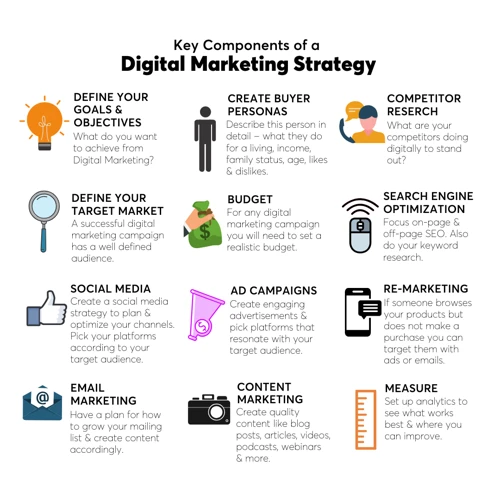
Building an audience is a crucial step in the success of your affiliate marketing blog. One effective strategy to implementing social media marketing. Utilize platforms like Facebook to promote your blog and reach a wider audience. Create engaging and shareable content that resonates with your target audience. Leverage Facebook’s advertising options to boost your posts and reach even more people. Engaging with your readers is another important aspect of building an audience. Respond to comments, messages, and inquiries promptly. Encourage your audience to interact with your content and share it with their networks. By building a strong presence on social media platforms like Facebook, you can attract a loyal following and increase your blog’s visibility and reach. So, don’t underestimate the power of social media in building an audience for your affiliate marketing blog.
Implementing Social Media Marketing
Implementing social media marketing is a crucial aspect of growing your affiliate marketing blog and reaching a wider audience. Social media platforms provide a vast opportunity to connect with potential readers and promote your content. Start by identifying the social media platforms that align with your target audience. Whether it’s Facebook, Instagram, Twitter, or Pinterest, each platform has its own unique features and user demographics. Create compelling and shareable content that resonates with your audience and encourages them to engage, comment, and share with their own networks. Consistency is key when it comes to social media marketing. Develop a content calendar and schedule regular posts to maintain an active presence. Use eye-catching visuals, catchy captions, and relevant hashtags to increase your reach and visibility. Additionally, interact with your followers by responding to comments, messages, and mentions. This helps build a sense of community and fosters a loyal audience. Experiment with different types of content, such as videos, infographics, or live streams, to keep your social media presence fresh and engaging. Lastly, track your social media performance using analytics tools to understand what content resonates most with your audience and adjust your strategy accordingly. By implementing effective social media marketing strategies, you can drive traffic to your blog and increase your affiliate marketing success.
Engaging with Your Readers
Engaging with your readers is a crucial aspect of building a successful affiliate marketing blog. By fostering a sense of community and actively interacting with your audience, you can establish trust, loyalty, and ultimately drive more conversions. One effective way to engage with your readers is through social media marketing. Utilize platforms like Facebook, Twitter, and Instagram to share your blog content, interact with followers, and respond to comments and messages. Regularly posting engaging and relevant content on social media can help you attract new readers and keep your existing audience engaged. Additionally, make sure to implement social sharing buttons on your blog posts, allowing readers to easily share your content with their own networks. Another way to engage with your readers is by responding to comments on your blog. Encourage readers to leave comments by asking questions or inviting them to share their thoughts and experiences. Take the time to respond to each comment individually, showing your readers that you value their input and appreciate their engagement. This not only encourages further interaction but also helps to build a sense of community around your blog. By actively engaging with your readers, both on social media and through comments, you can create a loyal and enthusiastic audience that is more likely to trust your recommendations and convert through your affiliate links. So, make it a priority to connect with your readers and build strong relationships that will benefit both your blog and your affiliate marketing efforts.
Joining Affiliate Networks
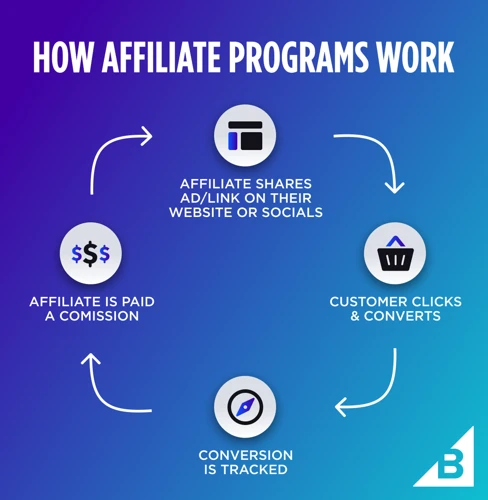
Once you have chosen a niche for your affiliate marketing blog, the next step is to join affiliate networks. Affiliate networks act as intermediaries between advertisers and publishers, connecting bloggers like you with a wide range of affiliate programs. These networks provide you with access to a variety of products and services that you can promote on your blog and earn commissions from. Some popular affiliate networks include Amazon Associates, ShareASale, and CJ Affiliate. To join an affiliate network, you will typically need to complete an application and provide information about your blog and your marketing strategies. Once approved, you can start browsing through the available affiliate programs and choose the ones that align with your niche and audience. Remember to read the terms and conditions of each program and understand the commission rates and payment methods. Joining affiliate networks is an essential step in monetizing your blog and earning income from your affiliate marketing efforts. So, start exploring different networks and find the ones that are the best fit for your blog and audience.
Researching and Applying to Affiliate Programs
Researching and applying to affiliate programs is a crucial step in monetizing your blog and earning commissions. To start, research various affiliate programs within your niche. Look for programs that offer products or services relevant to your blog content and target audience. Consider factors such as commission rates, cookie duration, and payment terms. It’s also important to review the reputation and track record of the affiliate program to ensure that they are reliable and trustworthy. Once you have identified potential affiliate programs, apply to join them. Most affiliate programs have an application process that may require you to provide information about your website, traffic statistics, and marketing strategies. Be sure to submit a well-written application that highlights your blog’s unique selling points and why you would be a valuable partner. After submitting your application, be patient and wait for a response from the affiliate program. Once approved, you can start promoting their products or services on your blog and earning commissions for every sale or lead generated through your affiliate links. Remember to regularly evaluate the performance of your affiliate programs and make adjustments as necessary to maximize your earnings.
Understanding Affiliate Commissions
Understanding affiliate commissions is essential for maximizing your earnings as an affiliate marketer. When you promote products or services through your blog and generate sales or leads, you earn a commission from the merchant or advertiser. Affiliate commissions can be structured in various ways, so it’s important to familiarize yourself with the different types.
1. Pay Per Sale (PPS): With this commission structure, you earn a percentage or fixed amount for each sale made through your affiliate link. For instance, if you promote a product with a 10% commission and someone buys it for $100, you would earn $10.
2. Pay Per Click (PPC): In this model, you earn a commission based on the number of clicks on your affiliate links, regardless of whether a sale is made or not. PPC commissions tend to be lower, but they can add up if you have high traffic and engagement on your blog.
3. Pay Per Lead (PPL): With PPL, you earn a commission for every qualified lead you generate for the advertiser. This could be a sign-up for a newsletter, a free trial, or filling out a form. PPL commissions vary depending on the advertiser and the value of the lead.
4. Two-Tier Commissions: Some affiliate programs offer two-tier commissions, where you not only earn commissions from your direct referrals but also from the sales made by affiliates you refer to the program. This can be an excellent way to earn passive income.
It’s important to read the terms and conditions of each affiliate program you join to understand the commission structure and any additional rules or requirements. Keep in mind that different affiliate networks and programs may have different commission rates and payment schedules. By understanding how affiliate commissions work, you can strategically choose products or services to promote and optimize your earnings potential.
Monetizing Your Blog
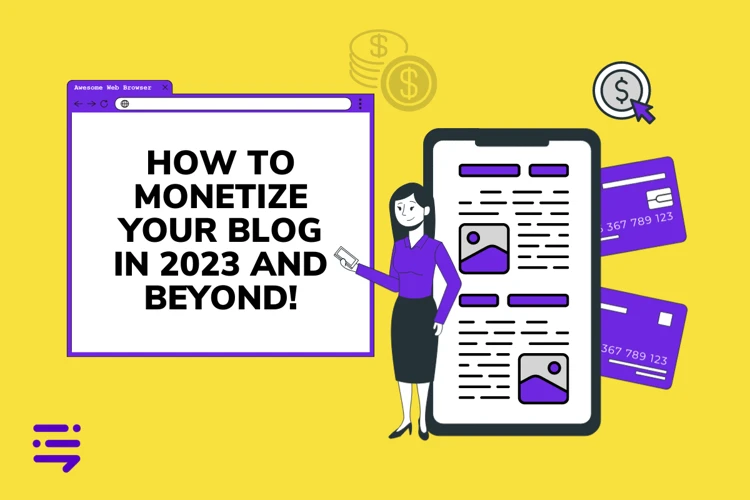
Once you have established your affiliate marketing blog and started attracting an audience, it’s time to focus on monetizing your efforts. One of the most effective ways to implement affiliate links into your blog is by strategically placing them within your content. When writing product reviews or informative articles, include relevant affiliate links that direct readers to the products or services you are promoting. These links should be seamlessly integrated and provide value to your audience. Additionally, you can explore other monetization methods such as sponsored posts, banner ads, or creating and selling your own digital products. By diversifying your income streams, you can maximize your earning potential and generate passive income from your blog. Remember to always disclose your affiliate relationships and provide genuine recommendations to maintain the trust of your audience. With a well-executed monetization strategy, your affiliate marketing blog can become a profitable venture.
Implementing Affiliate Links
Implementing affiliate links is a crucial aspect of monetizing your blog and earning commissions. Once you have joined affiliate networks and have been approved for affiliate programs, it’s time to strategically place affiliate links within your content. When inserting affiliate links, it’s important to do so in a way that feels natural and adds value to your readers. Avoid spammy or excessive linking, as this can harm your credibility and user experience. Instead, focus on integrating affiliate links organically into your blog posts, product reviews, and recommendations. Consider using contextual anchor text that seamlessly blends with your content. This helps to increase click-through rates and conversions. Additionally, you can utilize call-to-action buttons or banners to draw attention to affiliate products or promotions. It’s also essential to disclose your affiliate partnerships transparently to comply with legal regulations and build trust with your audience. Regularly monitor the performance of your affiliate links using analytics tools to identify which strategies are generating the most clicks and conversions. By continuously optimizing and refining your approach to implementing affiliate links, you can maximize your earning potential and build a sustainable revenue stream from your blog.
Exploring Other Monetization Methods
Exploring other monetization methods is a crucial aspect of running a successful affiliate marketing blog. While affiliate marketing can be a lucrative income stream, it’s always wise to diversify your revenue sources. One popular method is display advertising, where you can place banner ads or text ads on your blog. This can be done through ad networks like Google AdSense or by working directly with advertisers. Another option is sponsored content, where you collaborate with brands to create sponsored blog posts or reviews. This can be a great way to earn additional income while still providing valuable content to your audience. Additionally, selling digital products such as e-books, online courses, or templates can be a profitable avenue. These products can be related to your blog’s niche and provide even more value to your readers. Lastly, email marketing is another effective method to monetize your blog. By building an email list, you can send out targeted promotions or exclusive content to your subscribers, generating additional revenue. Remember, it’s important to choose monetization methods that align with your blog’s niche and audience to maximize your earnings. By exploring these alternative methods, you can further monetize your blog and increase your overall income.
Tracking and Analyzing Performance
![]()
Tracking and analyzing the performance of your affiliate marketing blog is essential to understand what strategies are working and where improvements can be made. One of the first steps is to set up Google Analytics to gather data on your website’s traffic, audience demographics, and user behavior. With this information, you can identify which pages and posts are generating the most engagement and conversions. Additionally, monitoring conversion rates is crucial to assess the effectiveness of your affiliate links and promotional efforts. By tracking your conversions, you can determine which affiliate programs are performing well and adjust your marketing strategies accordingly. Regularly reviewing and analyzing your blog’s performance will allow you to make data-driven decisions and optimize your content and marketing efforts for better results.
Setting Up Google Analytics
Setting up Google Analytics is an essential step in tracking and analyzing the performance of your affiliate marketing blog. To get started, follow these steps:
1. Create a Google Analytics account: Visit the Google Analytics website and sign in with your Google account. If you don’t have one, create a new account.
2. Set up a new property: Click on the “Admin” tab and select “Create Property.” Enter the details of your blog, such as the website name and URL.
3. Install the tracking code: After creating the property, you will be provided with a tracking ID and tracking code snippet. Copy the code and paste it into the header section of your blog’s HTML code. This will allow Google Analytics to collect data from your website.
4. Verify the installation: Once the tracking code is installed, Google Analytics may take a few hours to start collecting data. To verify if the installation is successful, go back to your Google Analytics account and navigate to the “Real-Time” tab. Open your blog in a new tab and check if the “Real-Time” report shows that there is an active user on your site.
5. Configure your goals: Goals help you track specific actions or conversions on your blog. For example, you can set a goal to track the number of newsletter sign-ups or product purchases. To set up goals, go to the “Admin” tab, select your property, and navigate to the “Goals” section. Click on “New Goal” and follow the prompts to define your goals.
6. Explore the reporting features: Once Google Analytics starts collecting data, you can explore various reports to gain insights into your blog’s performance. Some key reports to consider are the Audience report, Acquisition report, and Behavior report. These reports provide valuable information about your visitors, traffic sources, and user behavior on your blog.
By setting up Google Analytics, you will have access to a wealth of data that can help you make informed decisions to optimize your blog’s performance and improve your affiliate marketing strategy. Remember to regularly review and analyze the data to identify trends, measure the effectiveness of your marketing efforts, and make adjustments as needed.
Monitoring Conversion Rates
Monitoring conversion rates is a crucial aspect of running a successful affiliate marketing blog. It allows you to measure the effectiveness of your marketing efforts and optimize your strategies to maximize conversions. There are several key metrics that you should pay attention to when monitoring conversion rates. One of the most important metrics is the conversion rate itself, which represents the percentage of visitors who take the desired action, such as making a purchase or signing up for a newsletter. By tracking this metric, you can identify which pages or campaigns are performing well and which ones need improvement. Another metric to consider is the average order value, which measures the average amount of money spent by each customer. This metric can help you identify opportunities to upsell or cross-sell products to increase your revenue. Additionally, it’s important to track the conversion rate by traffic source, as this can give you insights into which marketing channels are driving the most conversions. By monitoring conversion rates on a regular basis, you can identify trends, make data-driven decisions, and continuously optimize your affiliate marketing efforts for better results.
Optimizing for SEO

Optimizing your affiliate marketing blog for SEO is essential to increase visibility and attract organic traffic. Start by conducting thorough keyword research and optimization. Identify relevant and high-volume keywords that your target audience is searching for and strategically incorporate them into your blog content. This will help search engines understand the relevance of your content and improve your chances of ranking higher in search results. Additionally, optimize your on-page elements such as meta titles, meta descriptions, heading tags, and URL structure to make it easier for search engines to crawl and index your pages. Focus on creating high-quality, informative, and engaging content that satisfies user intent. Utilize internal linking to establish a logical website structure and improve navigation. Implementing these SEO strategies will not only improve your search engine rankings but also enhance the overall user experience on your blog. So, invest time in optimizing your blog for SEO to drive more organic traffic and increase your chances of affiliate marketing success.
Keyword Research and Optimization
When it comes to keyword research and optimization for your affiliate marketing blog, it’s important to understand the significance of targeting the right keywords. Here are some steps to help you effectively optimize your content:
1. Brainstorm Relevant Keywords: Start by brainstorming a list of keywords that are relevant to your niche and the products or services you are promoting. Think about the terms that your target audience would use when searching for information or products related to your niche.
2. Use Keyword Research Tools: Utilize keyword research tools like Google Keyword Planner, SEMrush, or Ahrefs to identify high-volume and low-competition keywords. These tools will provide valuable insights into the search volume, keyword difficulty, and related keywords for your chosen niche.
3. Analyze Competitor Keywords: Research your competitors and analyze the keywords they are targeting. Look for opportunities to target similar keywords or long-tail variations that have lower competition but can still drive traffic to your blog.
4. Focus on Long-Tail Keywords: Long-tail keywords are longer and more specific phrases that are easier to rank for and often have higher conversion rates. Incorporate these keywords naturally into your blog posts and optimize your content around them.
5. Optimize On-Page Elements: Once you have identified your target keywords, optimize your blog posts by including them in strategic locations such as the title tag, meta description, headings, and throughout the content. However, make sure to maintain a natural flow and avoid keyword stuffing.
6. Create High-Quality Content: While keyword optimization is important, it should not overshadow the quality of your content. Focus on creating informative, engaging, and valuable content that resonates with your target audience. This will not only help with SEO but also encourage readers to stay on your blog and explore further.
Remember, keyword research and optimization is an ongoing process. Regularly monitor your keyword rankings, analyze your website’s performance, and make necessary adjustments to improve your search engine visibility. By incorporating effective keyword research and optimization strategies, you can attract organic traffic to your affiliate marketing blog and increase the chances of converting visitors into customers.
Optimizing On-Page Elements
Optimizing on-page elements is essential for improving the visibility and ranking of your affiliate marketing blog. It involves optimizing various elements within your web pages to make them more search engine-friendly and user-friendly. Start by optimizing your page titles by including relevant keywords that accurately describe the content of your page. Make sure your titles are concise, compelling, and unique for each page. Next, focus on optimizing your meta descriptions, which are the short snippets that appear below the page title in search engine results. Write compelling meta descriptions that include relevant keywords and entice users to click on your link. Another important on-page element to optimize is the URL structure. Create clean and descriptive URLs that include relevant keywords. Use hyphens to separate words and avoid using numbers and special characters. Additionally, optimize your headings by using H1 tags for your main heading and H2 and H3 tags for subheadings. This helps search engines understand the structure and hierarchy of your content. It’s also important to optimize your images by using descriptive file names and alt tags that include relevant keywords. Compress your images to improve page load speed. Lastly, optimize your content by incorporating relevant keywords naturally throughout your blog posts. Use header tags, bullet points, and internal links to enhance readability and improve the user experience. By optimizing these on-page elements, you can enhance the visibility, relevance, and overall performance of your affiliate marketing blog.
Building Backlinks
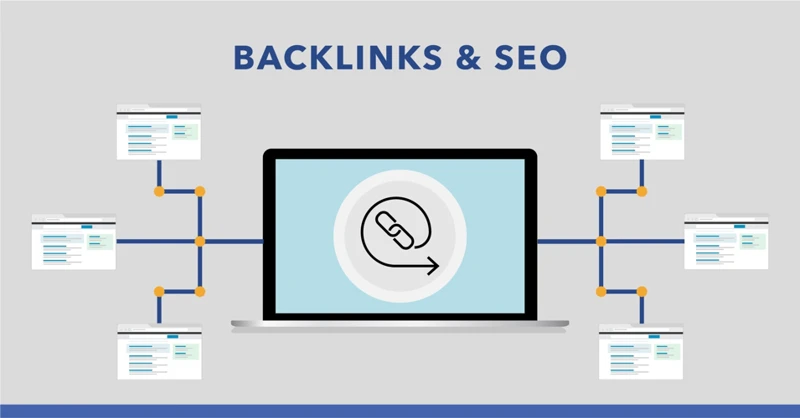
Building backlinks is an important aspect of optimizing your affiliate marketing blog for search engines and increasing your online visibility. Understanding the importance of backlinks is crucial in building a strong and authoritative online presence. Backlinks serve as “votes of confidence” from other websites, signaling to search engines that your content is valuable and trustworthy. To implement effective link building strategies, consider reaching out to other bloggers and website owners in your niche to collaborate on guest posting opportunities. Guest blogging allows you to showcase your expertise and gain exposure to a new audience while earning valuable backlinks to your blog. Additionally, you can explore other tactics such as creating shareable content, participating in industry forums, and utilizing social media platforms to generate organic backlinks. Remember, quality over quantity is key in building backlinks, so focus on securing links from reputable and relevant sources to enhance your blog’s authority and search engine rankings.
Understanding the Importance of Backlinks
Backlinks are an essential component of search engine optimization (SEO) and play a crucial role in determining the credibility and authority of a website. Essentially, a backlink is a hyperlink from one website to another. Search engines like Google consider backlinks as “votes” or endorsements of a website’s content and reliability. The more high-quality backlinks a website has, the more likely it is to rank higher in search engine results pages (SERPs).
Backlinks act as a signal to search engines that your website is trustworthy and relevant. When reputable websites link to your content, it indicates that your website offers valuable information and is worth referencing. As a result, search engines are more likely to rank your website higher in search results, increasing its visibility to potential visitors and driving organic traffic.
However, not all backlinks are created equal. Quality matters more than quantity when it comes to backlinks. Search engines consider the authority and relevance of the linking website when determining the value of a backlink. For example, a backlink from a well-known and reputable website in your niche will carry more weight than multiple backlinks from low-quality or irrelevant websites.
It’s important to note that while backlinks are a crucial aspect of SEO, they are just one of many factors that search engines consider when ranking websites. The overall quality of your content, user experience, and on-page optimization also play significant roles in determining your website’s ranking.
Understanding the importance of backlinks is essential for the success of your affiliate marketing blog. Building a strong backlink profile not only improves your website’s authority and credibility but also increases its visibility in search engine results. By focusing on acquiring high-quality backlinks from reputable sources, you can enhance your website’s SEO efforts and attract more organic traffic to your blog.
Implementing Effective Link Building Strategies
Implementing effective link building strategies is essential for improving the visibility and authority of your affiliate marketing blog. One of the most effective strategies is to create high-quality content that naturally attracts backlinks from authoritative websites. This can be achieved by producing informative and engaging articles, tutorials, or guides that offer unique insights and value to your target audience. Another strategy is to guest blog on relevant websites within your niche. By contributing valuable content to other blogs, you can gain exposure to a wider audience and earn backlinks to your own blog. Additionally, outreach is a crucial aspect of link building. Reach out to influencers, bloggers, and website owners within your niche and offer to collaborate or provide guest posts. Building relationships with these individuals can lead to opportunities for guest posting and earning backlinks. Lastly, social media promotion can also play a role in link building. Share your content on social media platforms and engage with your audience to encourage them to share your posts and link back to your blog. Remember, the key to effective link building is to focus on quality over quantity. Aim to earn backlinks from reputable and relevant websites, as these will have a greater impact on your search engine rankings and overall visibility.
Engaging with Your Audience

Engaging with your audience is a crucial aspect of building a successful affiliate marketing blog. Creating a community with comments and forums is a great way to encourage interaction and build a loyal following. Enable comments on your blog posts and actively respond to reader feedback and questions. This not only shows that you value your audience’s input, but it also helps foster a sense of community and encourages readers to return to your blog. Additionally, consider incorporating forums where readers can discuss topics related to your niche. This creates a space for like-minded individuals to connect and share their experiences and knowledge. By fostering engagement and providing a platform for discussion, you can build a loyal and active audience who will be more likely to trust your recommendations and engage with your affiliate links. So, make it a priority to actively engage with your audience and create a welcoming and interactive community on your blog.
Creating a Community with Comments and Forums
Creating a community with comments and forums is an essential aspect of building and engaging with your audience on your affiliate marketing blog. By allowing readers to leave comments on your blog posts, you can encourage interaction and foster a sense of community. Comments provide an opportunity for readers to share their thoughts, ask questions, and engage in discussions related to your content. It’s important to respond to comments promptly and thoughtfully, as this shows your readers that you value their input and are actively involved in the conversation. Additionally, implementing a forum on your blog can further enhance community engagement. Forums serve as a dedicated space for readers to connect with one another, share ideas, and seek advice. By providing a platform for discussions, you can create a sense of belonging and encourage readers to return to your blog regularly. Moderating the comments and forum posts is crucial to maintaining a positive and constructive environment. Ensure that the discussions remain respectful, relevant, and free from spam or inappropriate content. By creating a community with comments and forums, you not only encourage reader participation but also establish yourself as an authority in your niche and strengthen the bond between you and your audience.
Responding to Reader Feedback
Responding to reader feedback is an essential aspect of building and maintaining a successful affiliate marketing blog. When readers take the time to leave comments or provide feedback on your blog posts, it’s important to engage with them and show that you value their input. Responding to reader feedback not only helps to establish a sense of community but also builds trust and credibility with your audience. When replying to comments, be sure to address any questions or concerns that the reader may have. Provide helpful and informative responses that demonstrate your knowledge and expertise in the niche. Additionally, take the opportunity to ask follow-up questions or encourage further discussion, as this can lead to increased engagement and a deeper connection with your readers. It’s also important to be responsive and timely in your replies. Aim to respond to comments as soon as possible to show your readers that you value their input and are actively engaged with them. By actively responding to reader feedback, you can foster a loyal and engaged community, which can ultimately lead to increased traffic, conversions, and success for your affiliate marketing blog.
Scaling Your Affiliate Marketing Blog
As your affiliate marketing blog grows and gains traction, you may reach a point where you want to scale your business and take it to the next level. One way to do this is by outsourcing content creation. Hiring freelance writers or content agencies can help you produce more high-quality content on a consistent basis, freeing up your time to focus on other aspects of your blog. Additionally, expanding your reach with guest blogging can also contribute to the growth of your blog. By reaching out to established blogs in your niche and offering to write guest posts, you can tap into their audience and gain exposure to new readers. This strategy can help you build credibility, increase your reach, and attract more traffic to your blog. Remember, scaling your affiliate marketing blog requires careful planning and strategic decision-making, so make sure to assess your resources and goals before implementing any scaling strategies.
Outsourcing Content Creation
Outsourcing content creation is a strategic move that can help take your affiliate marketing blog to the next level. By delegating the task of content creation to skilled professionals, you can free up your time and focus on other important aspects of your business. There are several benefits to outsourcing content creation. First and foremost, it allows you to tap into a pool of talented writers who specialize in crafting high-quality and engaging content. These writers can bring fresh perspectives and ideas to your blog, helping to attract and retain your audience. Additionally, outsourcing content creation can help you maintain a consistent publishing schedule, ensuring that your blog remains active and relevant. This can be especially beneficial if you have a busy schedule or lack the necessary writing skills. When outsourcing content creation, it’s important to establish clear guidelines and expectations with your writers. Provide them with detailed briefs, style guides, and examples of the type of content you’re looking for. Regularly communicate with your writers, providing feedback and guidance to ensure that their work aligns with your vision and brand. Remember, outsourcing content creation is an investment in the growth and success of your affiliate marketing blog. So, take the time to find reliable and talented writers who can help bring your blog to life.
Expanding Your Reach with Guest Blogging
Guest blogging is a powerful strategy for expanding your reach and increasing your visibility in the affiliate marketing world. By collaborating with other bloggers and contributing high-quality content to their websites, you can tap into their existing audience and attract new readers to your own blog. Here’s how you can effectively leverage guest blogging to expand your reach:
1. Identify relevant blogs: Look for blogs in your niche that have a similar target audience as yours. These blogs should have a good domain authority and a strong readership base.
2. Research guest posting guidelines: Before reaching out to potential guest blogging opportunities, familiarize yourself with the guest posting guidelines of each blog. Pay attention to the topics they accept, the preferred writing style, and any specific requirements they may have.
3. Pitch your ideas: Craft a compelling pitch email to the blog owners, highlighting your expertise and proposing unique and valuable topics that you can write about. Personalize each pitch to show that you have done your research and understand their audience’s needs.
4. Create high-quality content: Once your guest post is accepted, focus on creating exceptional content that aligns with the blog’s style and provides value to their readers. Make sure to include a bio or author box that introduces yourself and links back to your own blog.
5. Promote your guest post: After your guest post is published, don’t forget to promote it on your own blog and social media channels. This will help drive traffic back to your blog and increase your visibility.
6. Build relationships: Guest blogging is not just about getting backlinks and exposure; it’s also an opportunity to build relationships with other bloggers in your niche. Engage with the blog owner and their audience by responding to comments and sharing the guest post on your own social media platforms.
By consistently guest blogging on relevant and reputable websites, you can establish yourself as an authority in your niche and attract a wider audience to your affiliate marketing blog. Remember to provide valuable content and engage with the audience to make the most out of your guest blogging opportunities.
Conclusion
In conclusion, starting an affiliate marketing blog can be a rewarding and profitable venture. By following the step-by-step process outlined in this guide, you can set yourself up for success. Choosing a profitable niche that aligns with your interests and has low competition is essential. Setting up your blog with a reliable domain and hosting provider, as well as installing a user-friendly content management system, will ensure a smooth and efficient blogging experience. Creating high-quality content that is optimized for search engines and engaging with your audience through social media and reader interactions will help you build a loyal following. Joining affiliate networks, researching and applying to relevant affiliate programs, and implementing affiliate links strategically will allow you to monetize your blog effectively. Tracking and analyzing your blog’s performance using tools like Google Analytics and continuously optimizing your content for SEO will help you drive organic traffic and improve conversion rates. Building backlinks and engaging with your audience through comments and forums will further enhance your blog’s visibility and credibility. As you scale your affiliate marketing blog, consider outsourcing content creation and expanding your reach through guest blogging. Remember to always stay up-to-date with industry trends and adapt your strategies accordingly. With dedication, perseverance, and a commitment to providing value to your audience, you can turn your affiliate marketing blog into a thriving online business. So, go ahead and take the leap into the world of affiliate marketing blogging, and enjoy the journey to success!
Frequently Asked Questions
What is affiliate marketing?
Affiliate marketing is a performance-based marketing strategy where individuals or businesses earn a commission by promoting other people’s or companies’ products or services.
Do I need a blog to start affiliate marketing?
No, having a blog is not a requirement for affiliate marketing. You can promote affiliate products through various channels such as social media, YouTube, email marketing, or even without a website.
How do I find profitable niches for my affiliate marketing blog?
Researching popular trends, identifying consumer pain points, and evaluating keyword search volume are effective ways to find profitable niches for your affiliate marketing blog. Additionally, using tools like Google Trends and keyword research tools can provide valuable insights.
What is the best content management system (CMS) for my affiliate marketing blog?
There are several popular CMS options available, including WordPress, Wix, and Blogger. However, WordPress is highly recommended due to its flexibility, extensive customization options, and vast collection of plugins specifically designed for affiliate marketers.
How can I drive traffic to my affiliate marketing blog?
Implementing effective SEO strategies, utilizing social media marketing, creating engaging content, and building an email list are some ways to drive traffic to your affiliate marketing blog. It’s important to diversify your traffic sources to ensure a steady stream of visitors.
What are affiliate networks?
Affiliate networks act as intermediaries between affiliates and merchants. They provide a platform for affiliates to discover and join affiliate programs, track their commissions, and access promotional materials.
How do I choose the right affiliate programs for my blog?
When selecting affiliate programs, consider factors such as commission rates, product relevance to your niche, the reputation of the merchant, and the quality of their promotional materials. It’s advisable to join programs that align with your blog’s content and offer products or services that your audience would find valuable.
What is the difference between affiliate marketing and influencer marketing?
Affiliate marketing focuses on driving sales and earning commissions through promoting products or services, while influencer marketing involves collaborating with influencers to raise brand awareness and promote products or services without necessarily earning a commission from sales.
How do I track the performance of my affiliate marketing efforts?
Setting up Google Analytics on your blog allows you to track important metrics such as traffic sources, page views, and conversion rates. Additionally, many affiliate networks provide tracking tools and dashboards to monitor your affiliate links’ performance.
Can I use multiple affiliate programs on my blog?
Absolutely! In fact, diversifying your income sources by promoting multiple affiliate programs can be beneficial. However, it’s essential to maintain a balance and ensure that the products or services promoted are relevant to your audience and align with your blog’s niche.







